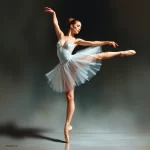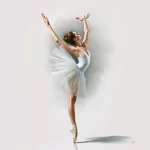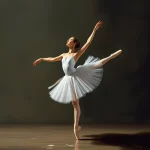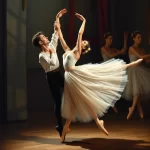How to Build a Ballet Resume: Tips for Dancers

Introduction
Building a ballet resume is a crucial step for any dancer aspiring to make a mark in the competitive world of ballet. A well-crafted resume not only highlights your skills and experiences but also sets you apart from other candidates. Whether you are auditioning for a ballet company, applying for a dance school, or seeking performance opportunities, a polished resume can make a significant difference. This article will guide you through the essential elements of creating an effective ballet resume, offering tips and insights to help you present your best self on paper.
Understanding the Basics of a Ballet Resume
What is a Ballet Resume?
A ballet resume is a document that outlines your dance training, performance experience, and other relevant skills. Unlike a traditional resume, a ballet resume focuses specifically on your dance career, including your technical abilities, roles performed, and any awards or recognitions you have received. It serves as a snapshot of your professional journey in the world of ballet.
Why is a Ballet Resume Important?
A ballet resume is important because it provides potential employers, directors, and choreographers with a comprehensive overview of your qualifications. It helps them assess whether you are a good fit for their company or production. A well-organized and detailed resume can make a strong impression, increasing your chances of being selected for auditions or roles.
Essential Components of a Ballet Resume
Contact Information
Your contact information should be placed at the top of your resume. Include your full name, phone number, email address, and home address. Make sure your email address is professional, and double-check that all contact details are accurate.
Professional Summary
A professional summary is a brief statement that highlights your key qualifications and career goals. This section should be concise, typically no more than 2-3 sentences. Focus on your most significant achievements and what you aim to accomplish in your ballet career.
Dance Training
List your dance training in reverse chronological order, starting with the most recent. Include the name of the dance school or institution, the location, the dates attended, and the instructors or choreographers you studied under. If you have attended any prestigious workshops or summer intensives, be sure to mention them as well.
Performance Experience
This section should detail your performance history, including the roles you have performed and the productions you have been a part of. Organize this information in reverse chronological order. For each entry, include the name of the production, the role you played, the name of the company or school, the location, and the date of the performance.
Awards and Recognitions
If you have received any awards, scholarships, or recognitions, list them in this section. Include the name of the award, the organization that granted it, and the date you received it. This section helps to showcase your achievements and dedication to your craft.
Special Skills
In addition to your dance training and performance experience, you may have other skills that are relevant to your ballet career. These could include proficiency in other dance styles, acting, singing, or even acrobatics. List any special skills that could enhance your versatility as a dancer.
References
Include a section for references at the end of your resume. List the names, titles, and contact information of 2-3 individuals who can vouch for your skills and professionalism. These could be former instructors, choreographers, or directors you have worked with.
Tips for Crafting an Effective Ballet Resume
Keep it Concise
While it is important to include all relevant information, your resume should be concise and to the point. Aim for one page if possible, but do not exceed two pages. Use bullet points and short sentences to make your resume easy to read.
Use a Professional Format
Choose a clean and professional format for your resume. Use a standard font such as Arial or Times New Roman, and keep the font size between 10-12 points. Use bold and italics sparingly to highlight important information.
Proofread Carefully
Errors in your resume can create a negative impression. Proofread your resume carefully to ensure there are no spelling or grammatical mistakes. Consider asking a friend or mentor to review it as well.
Tailor Your Resume for Each Opportunity
Customize your resume for each audition or application. Highlight the experiences and skills that are most relevant to the specific opportunity. This shows that you have taken the time to understand what the employer is looking for.
Include a Headshot
Attach a professional headshot to your resume. This helps potential employers put a face to your name and can make your application more memorable. Ensure that your headshot is high-quality and reflects your professional image.
Common Mistakes to Avoid
Overloading with Information
While it is important to be thorough, avoid overloading your resume with too much information. Focus on the most relevant and impressive details, and leave out any experiences that do not add value to your application.
Using Unprofessional Language
Your resume should be written in a professional tone. Avoid using slang or overly casual language. Be clear and concise, and use proper grammar and punctuation.
Neglecting to Update Your Resume
Keep your resume up to date with your latest experiences and achievements. Regularly review and revise your resume to ensure it accurately reflects your current qualifications.
FAQ
How long should a ballet resume be?
A ballet resume should ideally be one page long, but it can extend to two pages if necessary. The key is to be concise and include only the most relevant information.
Should I include my height and weight on my ballet resume?
Including your height and weight on your ballet resume is optional. Some companies may require this information, while others may not. If you choose to include it, place it in a small section near your contact information.
Can I include non-dance related work experience?
Generally, non-dance related work experience is not necessary on a ballet resume. However, if you have experience that is relevant to the role you are applying for (e.g., teaching dance, working in a related field), you can include it in a separate section.
How often should I update my ballet resume?
You should update your ballet resume regularly, especially after significant performances, training, or achievements. Keeping your resume current ensures that it accurately reflects your qualifications and experiences.
Is it necessary to include a cover letter with my ballet resume?
Including a cover letter with your ballet resume is a good practice. A cover letter allows you to introduce yourself, explain your interest in the opportunity, and highlight key aspects of your resume. It adds a personal touch to your application.
Conclusion
Building a ballet resume requires careful attention to detail and a clear understanding of what potential employers are looking for. By including essential components such as contact information, dance training, performance experience, and special skills, you can create a comprehensive and professional resume. Remember to keep it concise, use a professional format, and tailor it for each opportunity. Avoid common mistakes and keep your resume up to date. With these tips, you can present yourself as a well-qualified and dedicated dancer, ready to take the next step in your ballet career.





